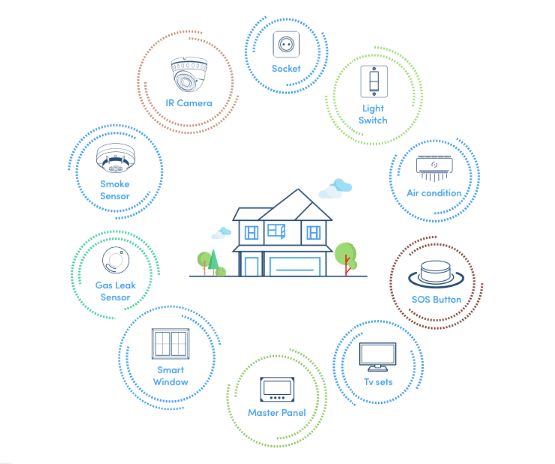Home Automation Using Iot
Jun 03, 2019 • 268 views

When the entire world is advancing with new technologies and IoT is the buzz word now. People who are aware of it are looking forward to home automation using IoT. But before we jump on IoT based home automation, let us understand what it is.
What is IoT?
Well IOT stands for Internet of Things. We can define IOT as connecting everyday things embedded with electronics, software & sensors to the internet, enabling them to collect & exchange data.
Home Automation using IoT
The concept of Home Automation aims to bring the control of operating your everyday home electrical appliances to the tip of your finger, thus giving user affordable lighting solutions, better energy conservation with optimum use of energy. Apart from just lighting solutions, the concept also further extends to have an overall control over your home security as well as build a centralised home entertainment system and much more.
It is possible to have an automated house using this technology. The three components of an IoT automated house are hardware, software and communication protocol. They are necessary as each of these are crucial in building a smart home. One important thing is to select the right communication protocol and firmware and combinig them in a well formed structure is result that we get. A well designed and tested one can help avoid performance issues.
The Requirements:
Controller : The Brain of Your System[Hub]
Smart Devices : The Sensory Organs of Your Home[LDR – Light sensor,HCSR501 - Motion Sensor]
Wireless Connectivity : How the Internal Communication Occurs[Wi-Fi, ZigBee and Z-Wave]
Connected with the Cloud : Access Everything on the Go [the cloud stores the data]
Events and Notifications : Get Notified Instantly[through phone]

This is exactly how it looks like when we put the entire system at work [as shown in the figure]
What are the applications of home automation?
IoT based Home Automation has revived the way people use the technology. There are many uses when we speak about the applications of home automation. Here are some most used applications
Smart locks and switches
Enhanced safety and security.
Appliances such as ACs and lights.
Water and air quality control and monitoring.
Smart home appliances
Benefits of IoT based Home Automation :–
Home Security – You can control the security of your house with your phone. If there is any suspicious activity, you will receive notifications and may probably operate the lights and locks through the phone.
Energy efficient house and savings – You can increase the energy efficiency by controlling the appliances through IoT. If you are unsure whether you have left the lights on, you can check and control it.
Convenience – This is the biggest advantage of smart home automation. You can control all the devices connected and makes it very convenient to have all the devices adjusted through the phone.
Key Barriers to Home Automation Adoption
Now the question comes to everyone's mind is that "if this has been such a phenomenon, then why haven't many people heard of it ?".
well it's quite simple the barriers include cost, security threats, the technological fragmentation present in the smart home industry. These problems are mainly due todifficulties in linking and integrating the conflicting and disparate smart home devices and systems and integrating them is much complex and takes a huge amount of time to integrate properly. Plus it's human nature to resist any sudden change, and maybe that's the reason we are knowing about this more now despite of being there many years. To know how to overcome them you can check out my other Wrytup focusing on it.
Successful home automation is all about the right combination of connected devices and seamless user experiences to solve problems, making intelligent connections as well as simplifying lives and protecting the most prized possession- home.
Thank you.
